La Plateforme (Equipements)
The équipments are loacated at the CEA-l’Orme-les-merisiers: two lights sources and associated endstations are dedicated to ultrafast studies in the gas phase and the solid state. They are operated by the ATTOLab partners under coordination of the Laboratory Interactions, Dynamics and Lasers (LIDyL) of CEA-CNRS
CEA / l’Orme-les-merisiers
Click here to access The FAB1-10 laser webpage on the SLIC Website !
CEA-l’Orme-les-merisiers site is a 600 m2 experimental space dedicated to gas phase and solid state studies. It hosts two Femtosecond-Attosecond Beamlines FAB1 and FAB10, each including an IR femtosecond laser and a HHG-based attosecond XUV source, respectively at 1 kHz and 10 kHz repetition rates, coupled to experimental endstations.
|
Elements |
Description |
|
FAB1 (E1) |
IR-vis-UV Femtosecond Laser at 1 kHz +XUV Atto Beamline |
|
FAB10 (E2) |
IR-vis-UV Femtosecond Laser at 10 kHz + XUV Atto Beamline |
|
Gas Phase endstation (E3) |
3 electron/ion spectrometers for Gas Phase (MBS, VMIS, COLTRIMS) |
|
Solid State endstation (E4) |
2 electron spectrometers for Solid State (TR-SR-PES, Atto-PEEM) |
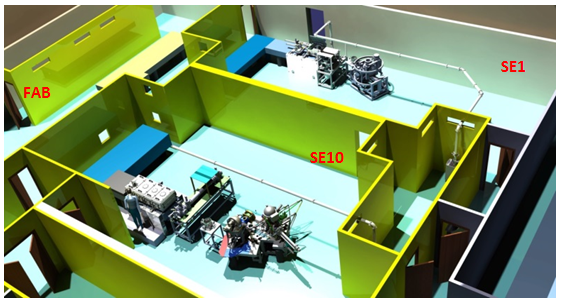
Figure 2 : CEA-l’Orme-les-merisiers : overall view of the experimental space: hall for FAB1-FAB10 lasers (FAB), experimental rooms with HHG attosecond sources and endstations (SE1 & SE10)
Elements 1 & 2 : FAB1 and FAB10 Femtosecond-Attosecond Beamlines
In FAB1-FAB10, the laser system has been developed by the industrial Amplitude Technologies in partnership with LIDyL. It is based on Ti:S and CPA technology in a “dual” architecture : i) common frontend at 10 kHz (CEP stabilized oscillator+stretcher+regen amplifier), ii) two parallel amplifying stages (cryo-cooled multipass amplifier + compressor), respectively, at 1 kHz and 10 kHz, conserving CEP control [Gobert11, Hergott11] :
-
FAB1 [800 nm, 24 fs, 15 mJ, CEP, 1 kHz, 15W ] is optimized for studies requiring high energy/shot, e.g., harmonic spectroscopy in molecules in the gas phase. Extension to the mid-IR spectral range (1.2-2µm) is currently available with a high-energy CEP stabilized OPA.
-
FAB10 [800 nm, 23 fs, 2 mJ, CEP, 10 kHz, 20 W] is optimized for studies requiring high recurrence/average power in the gas phase (e.g., coincidence measurement) and solid-state (photoemission).
In addition to the standard mode of operation (23 fs, 15 mJ@1 kHz and 2 mJ@10 kHz), specific characteristics are achievable. For instance, pulse duration down to 17 fs is possible with reduced energy. Tunability in the 760-840 nm range has been demonstrated at low energy with 50 to 100 fs pulse duration depending on the spectral shape and width (Δλ~30 -40 nm). Finally, post-compression of the 24 fs pulses down to 5 fs in a gas-filled hollow core fiber is pursued on the FAB1 laser.
HHG-based attosecond XUV secondary sources are driven by the two laser beamlines :
- One attosecond beamline (SE1), developed on the former PLFA laser [Weber et al, Review of Scientific Instruments 86, 033108 (2015)], is driven by the FAB1 laser. The high laser energy allows multiple-beam designs as well as spatio-temporal/spectral shaping for a versatile and flexible attosecond beamline.
- One attosecond beamline (SE10) is driven by the FAB10 laser. This brand new beamline is dedicated to high reprate applications. It includes an innovative spectro-temporal selection module developed in the frame of the OPT2X and Pulse-X projects. It allows fast switching between 3 working modes ranging from ‘narrow band/10fs’ to ‘very broad band/100as’ operation.
Production of isolated attosecond pulses is investigated by various techniques, e.g., optical waveform synthesis of the driving laser field, attosecond lighthouse… .
The XUV attosecond beamlines are equipped with spatial and spectral/temporal metrology capabilities: wavefront sensor, complete setup for FROG-type amplitude and phase RABBIT spectroscopy (Reconstruction of Attosecond Beatings By Interference of two-photon Transitions’ [Paul01, Mairesse03, Weber15]) and FROG CRAB spectroscopy [Mairesse05].
RABBIT spectroscopy is currently used in ATTOlab. It aims at characterizing the temporal/spectral structure of an ultrashort – attosecond - pulse of light E(t) in the XUV spectral range. RABBIT may be viewed as a variant of the generic FROG techniques (“Frequency-Resolved Optical Gating”, http://frog.gatech.edu/).
To analyze E(t), FROG first combines it with an “optical gate” g(t-τ) – usually another light pulse – delayed by the delay τ with respect to E(t), and second takes the spectrum S(ω,τ) of the E(t)g(t-τ) signal, where ω is the frequency (spectral variable). From the so-called “spectrogram” S(ω,τ), FROG can fully retrieve both pulses E(t) and g(t).

Figure 3 : RABBIT spectrogram S(ω,τ) measured on the Attosecond Beamline SE1. The S(ω,τ) signal corresponds to photoelectrons produced by photoionization of a rare gas by combined XUV attosecond and IR laser pulses, relatively delayed by the delay τ. From the spectrogram, RABBIT can retrieve the spectral amplitude and phase of the attosecond pulses. RABBIT [Mairesse03] and FROG-CRAB [Mairesse05] are FROG-type techniques and powerful tools for nonlinear harmonic spectroscopy.
Element 3: Gas Phase end station
The gas phase endstation comprises three setups combining gas targets and three types of electron/ion spectrometers. They are operated by the ISMO, LFP, SOLEIL and LIDyL partners on both FAB1 and FAB10, between which they can be permuted. They are accessible to external users:
-
two high-resolution TOF-magnetic bottle electron spectrometers (TOF-MBS) permanently installed on FAB1 and FAB10 [Weber15].
-
one electron/ion velocity map imaging spectrometer (VMIS) integrating functionalities for ion/electron coincidences and mass & charge selection [Garcia09].
-
one electron/ion 3D momentum imaging spectrometer of COLTRIMS type (“reaction microscope”) , working in the coincidence mode, including supersonic molecular beam [Lebech02, Picard14, Weber15 ].
Element 4: Solid State end station
The solid-state endstation comprises two instruments. TR-SR-PES is a Time-of-Flight Spin (ToF-Spin) analyser allowing for time and spin-resolved photoelectron spectroscopy. The ToF analyser incorporates electron optics to decelerate electrons into a drift tube, followed by another electron optic assembly for electron beam refocusing to perform spin-integrated measurements. Spin resolution is achieved when electron beam enters the 4-channel retarding field Mott polarimeter.
Atto-PEEM MesoXcope improves dramatically high precision fully spectroscopic correlation between chemical and electronic states. It is derived from an electrostatic PhotoEmission Electron Microscope (PEEM), coupled with a twin hemispherical analyser [Barret14, Mathieu14, Mikkelsen09]. First, real space PEEM produces aberration-free achromatic image of the photoelectron intensity over µm-scale sample surface. Second, MesoXcope also work in the k-PEEM mode, giving an intensity image in the reciprocal space and thus performing spatially resolved, full 2D band structure analysis. High reprate of FAB10 will reduce the space charge effects. High counting statistics should allow for pump/probe studies in the k-PEEM mode and as-mapping of wave vector distributions.
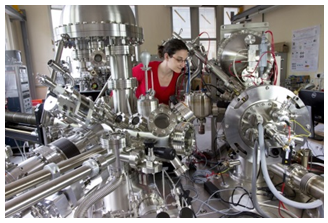
Figure 4 : MesoXscope setup for Photoemission Electron Microscopy (PEEM) (ESML/SPEC, credits N. Barrett)
CEA / l’Orme-les-merisiers : building before/after installation
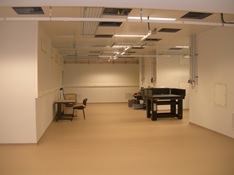
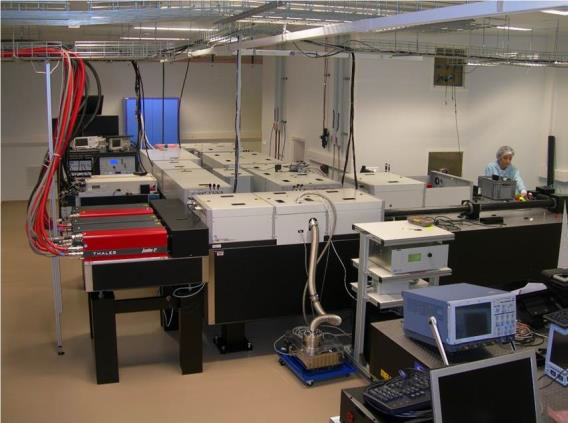
Figure 5 : Laser room before/after installation of the FAB1 (15 W, 1 kHz) and FAB10 (20 W, 10 kHz) systems
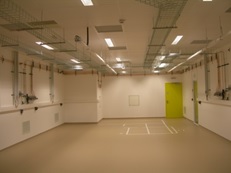

Figure 6 : Experimental room SE1 before/after installation of the attosecond beamline. A 2m-long magnetic bottle electron spectrometer (in the foreground) is supplied with the attosecond XUV light produced with the 1-kHz 15-mJ FAB 1 laser.
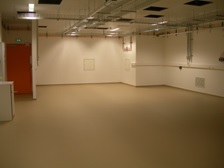

Figure 7 : : Experimental room SE10 before/after installation of the attosecond beamline. A COLTRIMS (ISMO), visible on the right, is supplied with the attosecond XUV light produced with the FAB10 laser at 10 kHz reprate.
|
[Barrett14] |
Microscopic work function anisotropy and surface chemistry of 316L stainless steel using photoelectron emission microscopy, Barrett, N.; Renault, O.; Lemaitre, H.; Bonnaillie, P.; Barcelo, F.; Miserque, F.; Wang, M.; Corbel, C., JOURNAL OF ELECTRON SPECTROSCOPY AND RELATED PHENOMENA 195, 117 (2014) - DOI :10.1016/j.elspec.2014.05.015 |
|
[Garcia09] |
A versatile electron-ion coincidence spectrometer for photoelectron momentum imaging and threshold spectroscopy on mass selected ions using synchrotron radiation, G. A. Garcia, H. Soldi-Lose, L. Nahon, Rev. Sci. Instrum. 80, 023102 (2009); doi: 10.1063/1.3079331 |
|
[Gobert11] |
Carrier-envelope phase control using linear electro-optic effect, Gobert, O.; Paul, P. M.; Hergott, J. F.; Tcherbakoff, O.; Lepetit, F.; D'Oliveira, P. ; Viala, F. & Comte, M., Optics Express 19, 5410 (2011) |
|
[Hergott11] |
“Carrier-Envelope Phase stabilization of a 20 W, grating based, chirped-pulse amplified laser, using Electro-Optic effect in a LiNbO3 crystal”, J.-F. Hergott, O. Tcherbakoff, P.-M. Paul, Ph. Demengeot, M. Perdrix, F. Lepetit, D. Garzella, D. Guillaumet, M. Comte, P. D’Oliveira and O. Gobert, , Opt. Express 19, 19935 (2011). |
|
[Lebech02] |
Ion–electron velocity vector correlations in dissociative photoionization of simple molecules using electrostatic lenses, M. Lebech, J. C. Houver, D. Dowek, Rev Sci Instrum 73, 1866 (2002); doi: 10.1063/1.1458063 |
|
[Mairesse03] |
Attosecond Synchronization of High-Harmonic Soft X-rays, Mairesse, Y.; de Bohan, A.; Frasinski, L. J.; Merdji, H.; Dinu, L. C.; Monchicourt, P.; Breger, P.; Kovacev, M.; Taïeb, R.; Carré, B.; Muller, H. G.; Agostini, P. & Salières, P., Science 302,1540-1543 (2003) |
|
[Mairesse05] |
«Frequency-resolved optical gating for complete reconstruction of attosecond bursts», Mairesse, Y.; Quéré, F., Phys. Rev. A 71, 011401 (2005) |
|
[Mathieu14] |
Exploring interlayer Dirac cone coupling in commensurately rotated few-layer graphene on SiC(000-1), Mathieu, C.; Conrad, E. H.; Wang, F.; Rault, J. E.; Feyer, V.; Schneider, C. M.; Renault, O.; Barrett, N., SURFACE AND INTERFACE ANALYSIS 46, 1268 (2014) (10.1002/sia.5541) |
|
[Mikkelsen2009] |
Photoemission electron microscopy using extreme ultraviolet attosecond pulse trains, Mikkelsen, A.; Schwenke, J.; Fordell, T.; Luo, G.; Klunder, K.; Hilner, E.; Anttu, N.; Zakharov, A. A.; Lundgren, E.; Mauritsson, J.; Andersen, J. N.; Xu, H. Q. & L'Huillier, A., Rev Sci Instrum 80, 123703 (2009) |
|
[Paul01] |
Observation of a Train of Attosecond Pulses from High Harmonic Generation, Paul, P. M.; Toma, E. S.; Breger, P.; Mullot, G.; Augé, F.; Balcou, P.; Muller, H. G. & Agostini, P., Science 292,1689-1692 (2001) |
|
[Picard14] |
Attosecond evolution of energy- and angle-resolved photoemission spectra in two-color (XUV plus IR) ionization of rare gases, Picard, Y. J.; Manschwetus, B.; Geleoc, M.; Boettcher, M.; Casagrande, E. M. Staicu; Lin, N.; Ruchon, T.; Carre, B.; Hergott, J. -F.; Lepetit, F.; Taieb, R.; Maquet, A.; Huetz, A., Ruchon, Thierry, PHYSICAL REVIEW A 89, 031401 (2014) (10.1103/PhysRevA.89.031401) |
|
[Weber15] |
Flexible attosecond beamline for high harmonic spectroscopy and XUV/near-IR pump probe experiments requiring long acquisition times, Weber, SJ; Manschwetus, B; Billon, M; Bottcher,; Bougeard, M; Breger, P; Géléoc, M; Gruson, V; Huetz, A; Lin, N, Picard Y. J., Ruchon T., Salières P., and Carré B., Rev. Sci Instrum 86, 033108 (2015), DOI: 10.1063/1.4914464 |
|
|
|












